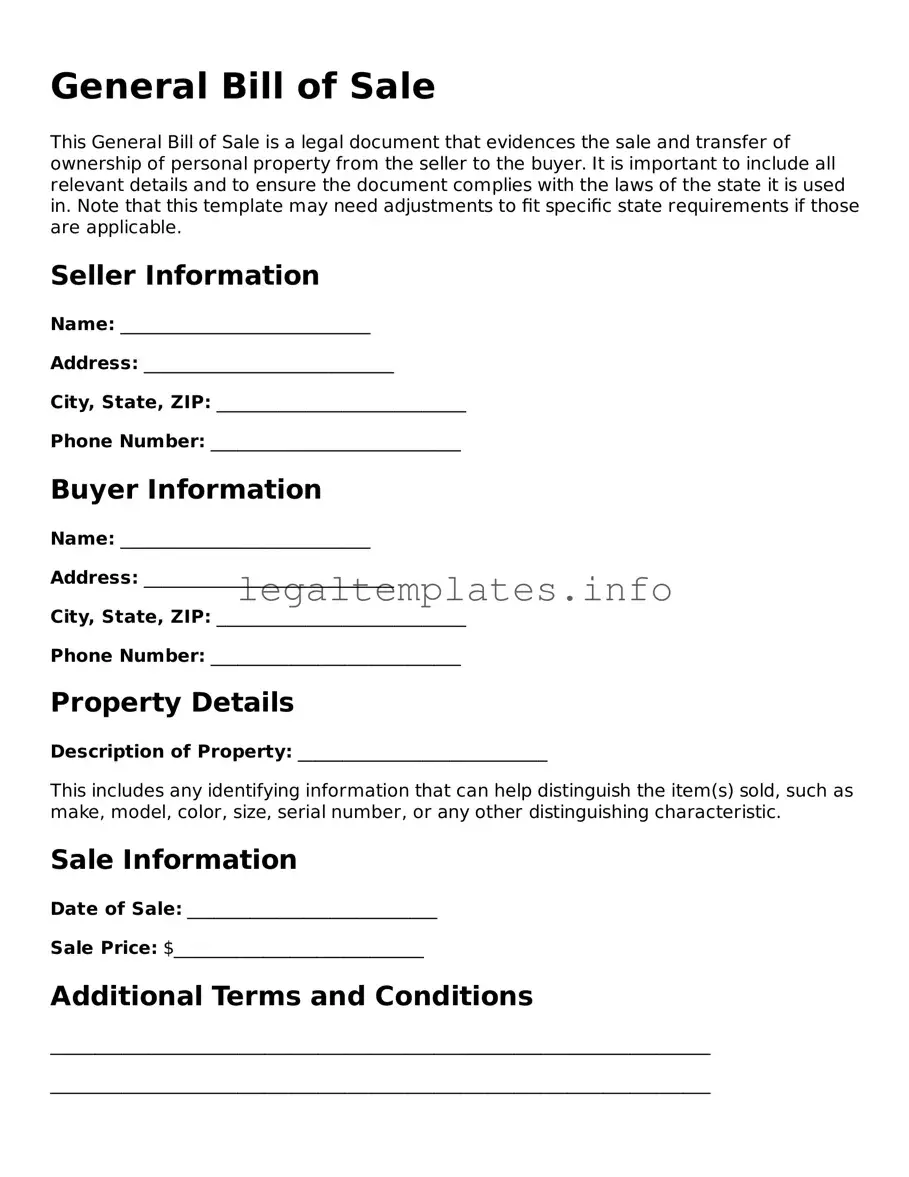General Bill of Sale
This General Bill of Sale is a legal document that evidences the sale and transfer of ownership of personal property from the seller to the buyer. It is important to include all relevant details and to ensure the document complies with the laws of the state it is used in. Note that this template may need adjustments to fit specific state requirements if those are applicable.
Seller Information
Name: ____________________________
Address: ____________________________
City, State, ZIP: ____________________________
Phone Number: ____________________________
Buyer Information
Name: ____________________________
Address: ____________________________
City, State, ZIP: ____________________________
Phone Number: ____________________________
Property Details
Description of Property: ____________________________
This includes any identifying information that can help distinguish the item(s) sold, such as make, model, color, size, serial number, or any other distinguishing characteristic.
Sale Information
Date of Sale: ____________________________
Sale Price: $____________________________
Additional Terms and Conditions
__________________________________________________________________________
__________________________________________________________________________
Details here should include how and when the price will be paid, whether the sale is as-is or if there are warranties, and how disputes about the item will be resolved.
Signatures
This document is not valid until both parties have signed. Signing this document confirms that both the buyer and the seller agree to the terms of sale as described above.
Seller's Signature: ____________________________ Date: ____________________________
Buyer's Signature: ____________________________ Date: ____________________________
Witness's Signature (if applicable): ____________________________ Date: ____________________________
Notarization (if required)
If your state requires this document to be notarized, it must be signed in the presence of a notary public.
